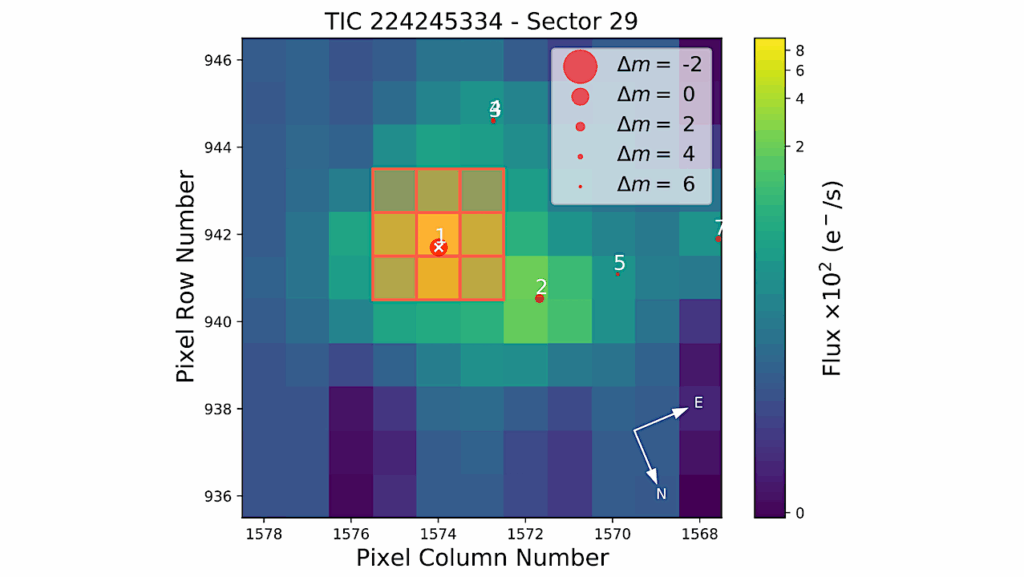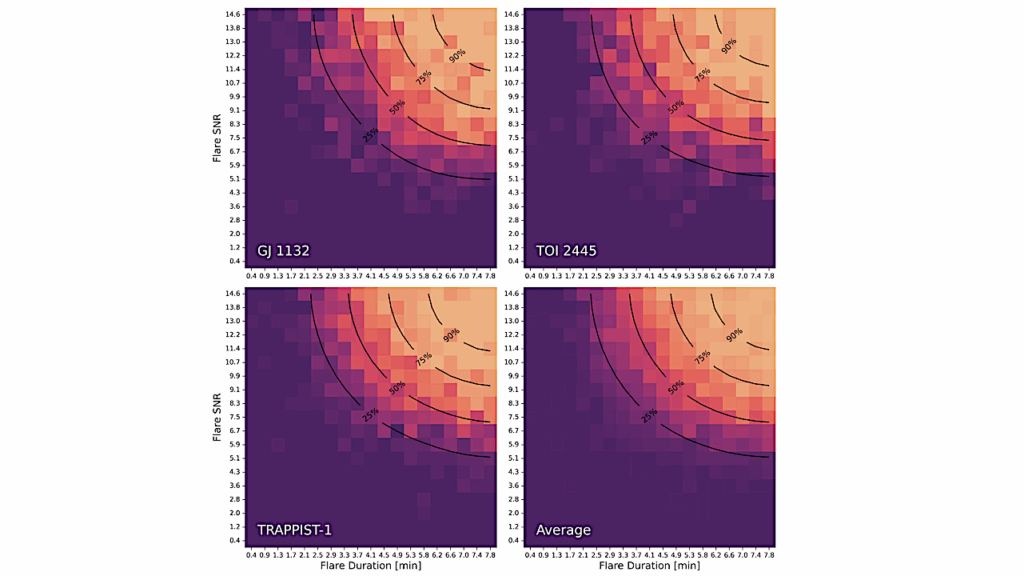Sulfur Dioxide and Other Molecular Species in the Atmosphere of the Sub-Neptune GJ 3470 b

We report observations of the atmospheric transmission spectrum of the sub-Neptune exoplanet GJ 3470 b taken using the Near-Infrared Camera (NIRCam) on JWST. Combined with two archival HST/WFC3 transit observations and fifteen archival Spitzer transit observations, we detect water, methane, sulfur dioxide, and carbon dioxide in the atmosphere of GJ 3470 b, each with a significance of >3-sigma.
GJ 3470 b is the lowest mass — and coldest — exoplanet known to show a substantial sulfur dioxide feature in its spectrum, at Mp=11.2M⊕ and Teq=600K. This indicates disequilibrium photochemistry drives sulfur dioxide production in exoplanet atmospheres over a wider range of masses and temperatures than has been reported or expected.
The water, carbon dioxide, and sulfur dioxide abundances we measure indicate an atmospheric metallicity of approximately 100× Solar. We see further evidence for disequilibrium chemistry in our inferred methane abundance, which is significantly lower than expected from equilibrium models consistent with our measured water and carbon dioxide abundances.
Thomas G. Beatty, Luis Welbanks, Everett Schlawin, Taylor J. Bell, Michael R. Line, Matthew Murphy, Isaac Edelman, Thomas P. Greene, Jonathan J. Fortney, Gregory W. Henry, Sagnick Mukherjee, Kazumasa Ohno, Vivien Parmentier, Emily Rauscher, Lindsey S. Wiser, Kenneth E. Arnold
Comments: 25 pages, 9 figures, 6 tables. Accepted in Astrophysical Journal Letters
Subjects: Earth and Planetary Astrophysics (astro-ph.EP)
Cite as: arXiv:2406.04450 [astro-ph.EP] (or arXiv:2406.04450v1 [astro-ph.EP] for this version)
Submission history
From: Thomas Beatty
[v1] Thu, 6 Jun 2024 19:19:10 UTC (1,552 KB)
https://arxiv.org/abs/2406.04450
Astrobiology








